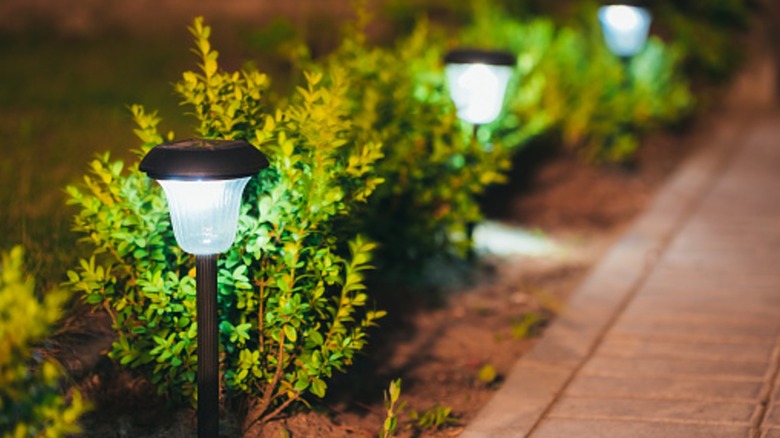Do Solar Lights Need Full Daily Sun Or Just Any Light To Charge?
You can use multiple light sources to charge solar lights, but they work best with sunlight, so it's almost always better to leave them out in the sun. They use the same technology as solar panels, and the best solar panels still produce electricity on cloudy days or during the dark, winter months.
The problem, however, is that solar technology output is likely drop on cloudy days or during the winter, depending on factors such as the panels' tilt angle and exposure to dust. Studies suggest that horizontally placed solar panels could produce up to 20.09% less electricity in winter than in summer. So, it's safe to say that sometimes, you may need more than just leaving it outside or close to a window to effectively power your solar light.
Fortunately, you can also use different types of artificial light; research shows that conventional photovoltaic technologies (how solar energy works) designed to absorb solar energy can also convert indoor light to electricity. Some examples of lights that can charge your solar lights include fluorescent, LED, and incandescent lights.
How effective is artificial light charging?
In general, artificial lights are much less effective than sunlight. The sun provides much more energy than any indoor light. For example, the direct noon sun provides as much as 100,000+ lux, and even on cloudy days, solar panels may still get up to 25,000 lux. Office fluorescent lights, on the other hand, may produce as little as 300 to 500 lux, while Halogen floodlights can reach 1,000 to 2,000 lux.
What this means is that artificial light charging may only work for fancy solar lights that don't have a high energy demand: 2 to 10 Wh. Luckily, the type of solar light people typically use at home has a low energy demand — 5 to 10 Wh in many cases.
Street lights, however, are a different ballgame. Many people buy permanent outdoor lights for aesthetic or security purposes — artificial lights will likely not power such solar lights effectively. Instead, ensure these lights are set up so that sunlight can reach them easily. Placing reflective objects such as mirrors and aluminum foil close to solar lights can also help them capture more sunlight on cloudy days. Other measures you can take to ensure your solar lights work are using a portable power station and changing the light's batteries.

